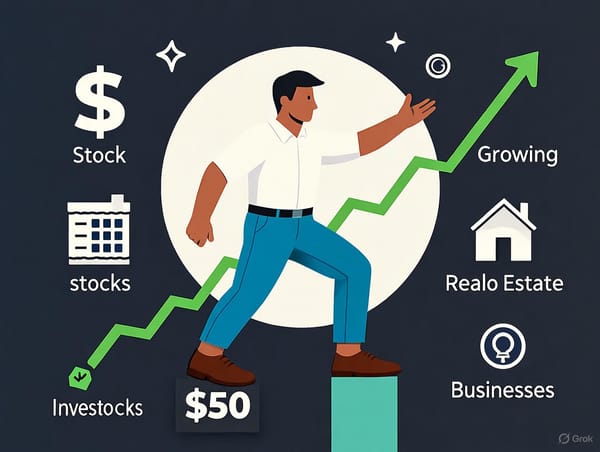Bad Debt vs. Good Debt
Bad debt drains your resources with no lasting value, while good debt invests in your future, potentially building wealth and stability.

Debt is a concept that often carries a negative connotation. Many people associate it with financial stress, unpaid bills, or economic hardship. However, not all debt is created equal. In the world of personal finance, debt can be categorized into two distinct types: bad debt and good debt. Understanding the difference between these two can empower individuals to make smarter financial decisions, leveraging debt as a tool for growth rather than a burden that drags them down. In this extended blog post, we’ll dive deep into what defines bad debt and good debt, explore examples of each, and discuss how to manage them effectively.
What Is Debt, Anyway?
Before we distinguish between bad debt and good debt, it’s worth defining what debt actually is. At its core, debt is money borrowed from one party (a lender) with the promise to repay it, usually with interest, over a set period of time. It’s a financial obligation that can arise from various sources—credit cards, loans, mortgages, or even informal agreements with friends or family. The way this borrowed money is used, and the terms under which it’s repaid, largely determine whether it falls into the "bad" or "good" category.
Debt itself isn’t inherently evil or virtuous; it’s a neutral tool. What matters is how it’s wielded. Think of it like a hammer: you can use it to build a house (productive) or accidentally smash your thumb (painful and counterproductive). Let’s explore how this analogy applies to bad debt and good debt.
Defining Bad Debt
Bad debt refers to money borrowed to purchase things that lose value over time, offer no financial return, or don’t contribute to your long-term wealth or well-being. Typically, bad debt comes with high interest rates and is often tied to consumption rather than investment. It’s the kind of debt that can spiral out of control if not managed carefully, leaving borrowers in a worse financial position than before.
Characteristics of Bad Debt
Bad debt tends to have a few common traits:
- Depreciating Assets: The money is spent on items that lose value quickly, like luxury goods, trendy gadgets, or extravagant vacations.
- High Interest Rates: Loans for bad debt often carry steep interest, such as credit card balances with APRs exceeding 20%.
- No Long-Term Benefit: The purchase doesn’t improve your financial situation or generate income over time.
- Impulsive Decisions: Bad debt often stems from unplanned or emotionally driven spending rather than strategic choices.
Examples of Bad Debt
A classic example of bad debt is racking up credit card balances to buy designer clothes or fund an expensive night out. Once the clothes go out of style or the hangover fades, you’re left with nothing tangible to show for it—except a hefty bill. Another example is taking out a high-interest personal loan to cover everyday expenses like groceries or rent when cash flow is tight. While it might solve an immediate problem, the interest payments can quickly outweigh the benefit, digging a deeper financial hole.
Defining Good Debt
On the flip side, good debt is borrowing that serves as an investment in your future. It’s money spent on assets or opportunities that have the potential to increase in value, generate income, or improve your financial stability over time. Good debt is often associated with lower interest rates and is typically part of a calculated plan to build wealth or achieve significant life goals.
Characteristics of Good Debt
Good debt stands apart from its counterpart in several ways:
- Appreciating Assets: The borrowed money funds something that grows in value, like real estate or education.
- Reasonable Interest Rates: Good debt often comes with manageable rates, making repayment less burdensome.
- Income Potential: The investment can pay for itself or generate returns over time.
- Strategic Purpose: Borrowing is intentional, aligned with long-term financial objectives.
Examples of Good Debt
A mortgage is one of the most common examples of good debt. When you borrow to buy a home, you’re investing in an asset that (in most markets) appreciates over time. Plus, you’re building equity as you pay down the loan. Another example is a student loan taken to earn a degree in a high-demand field. If that education leads to a well-paying career, the income boost can far outweigh the cost of the loan. Similarly, a small business loan to start a company can be good debt if the business succeeds and generates profit.
When Debt Isn’t Clearly Good or Bad
Not every debt fits neatly into the "good" or "bad" box. Context matters—a lot. For instance, a car loan could be good debt if the vehicle is essential for commuting to a job that pays your bills. But it might be bad debt if you’re financing a luxury sports car you can’t afford just to impress your neighbors. The same goes for credit card debt: using a card to cover an emergency medical expense might be justifiable, but letting that balance balloon with interest turns it into a problem.
The key question to ask is: Does this debt enhance my life or net worth in a meaningful way, or is it simply draining my resources? Your financial situation, goals, and discipline in managing repayment all play a role in determining where a debt falls on the spectrum.
Why the Distinction Matters
Understanding the difference between bad debt and good debt isn’t just an academic exercise—it has real-world implications for your financial health. Bad debt can trap you in a cycle of high interest and minimum payments, eroding your ability to save or invest. Good debt, when managed wisely, can be a stepping stone to wealth-building and financial freedom.
For example, someone drowning in bad debt might struggle to qualify for a mortgage (good debt) because their credit score is tanked and their income is stretched thin. Conversely, someone who uses good debt strategically—like buying rental properties—can create passive income streams that pay off the debt and then some.
Managing Debt Effectively
Whether you’re dealing with bad debt, good debt, or a mix of both, how you handle it makes all the difference. Here are some practical steps to keep debt in check.
Tackle Bad Debt First
Prioritize paying off high-interest debts like credit card balances. Use strategies like the debt avalanche method (paying off the highest-interest debt first) or the debt snowball method (starting with the smallest balance for quick wins) to gain momentum.
Leverage Good Debt Wisely
Before taking on good debt, crunch the numbers. Can you afford the payments? Will the investment pay off? For instance, don’t overextend yourself on a mortgage for a house beyond your means—appreciation isn’t guaranteed.
Avoid Blurring the Lines
Be honest with yourself about your borrowing habits. That personal loan for a “business idea” might feel like good debt, but if the plan is half-baked, it could easily turn bad.
Build an Emergency Fund
Having cash reserves can prevent you from relying on bad debt to cover unexpected expenses, keeping your financial plan on track.
Final Thoughts: Debt as a Tool, Not a Trap
In the end, the difference between bad debt and good debt boils down to purpose and outcome. Bad debt drains your resources and leaves you with little to show for it, while good debt builds a foundation for growth and stability. By recognizing which is which, you can take control of your financial narrative—using debt as a tool to create opportunities rather than a trap that limits them.
So, the next time you’re tempted to swipe a credit card or sign a loan agreement, pause and ask: Is this debt working for me, or against me? The answer could shape your financial future more than you realize.





